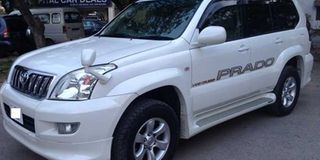How does a 4WD system work?

What you need to know:
- When one or two of your wheels get into a slippery ditch or patch there will be wheel spin due to loss of traction.
- This will stop the car from moving forward because the centre differential tends to send power to the fastest axle.
- The axle differential in turn sends power to the fastest wheel which is the one spinning on the slippery patch.
Hi Paul, I drive a 2003 Toyota Prado with a four wheel drive system. Recently I got stuck when I was driving on a wet murram road in the village. I was stranded for hours until a Good Samaritan was able to use the four wheel drive and get us out of the slippery spot. Can you tell me how this vehicle’s 4WD system works and how to use it? Musoke David.
Hello David, engaging or using the four wheel drive system (4WD) when you are stuck can be a daunting task if you have no prior training or user knowledge.
In my experience of training career fleet drivers, I have found it useful to first describe the concept of four wheel drive before attempting to explain how it works, how to use it and when to use it.
Four Wheel Drives (4WD) is a vehicle system which enables you to deliver engine power or drive from the transmission to all the four wheels using a transfer case.
The transfer case delivers drive power from the transmission to the front and rear axles by means of drive shafts and helps to synchronise the difference in speeds between the two axles.
There are 4WD vehicles which offer the selectable or part time 4WD while others are full time 4WD or All Wheel Drive (AWD).
Part time or full time conventional 4WD systems have selectable High (H) range and Low (L) range gear ratios to use with the 4WD system.
H is for driving at normal speeds on firm tarmac or gravel roads, while L is selected when you have to drive at slow speeds over gravel, wet slippery muddy surface or towing another car off road. N is neutral with no drive.
A 4WD vehicle has three differential units which allow the wheels to travel at different speeds.
The front and rear axle differential units allow their respective wheels to move at different speeds.
The centre differential allows the front and rear axle wheels to move at different speeds.
This feature allows the car to travel around corners as the wheels nearest to the corner travel at different speeds compared to the ones on the outer side.
On newer full time 4WD vehicles like your 2003 Toyota Prado, you have a knob on the transfer case with L and H and an electric switch showing the three diffs on two axles, for differential lock and disengagement.
For normal driving on tarmac and gravel roads, H mode should be selected, while L should be selected when you are stuck on slippery mud, driving down a steep slope or when you need more traction while towing.
Shifting between H and L ought to be done when you engage neutral to allow seamless transfer.
Newer vehicles have ‘shift on the go’ transfer case designs which allow shifting from H to L while driving at low speeds.
When one or two of your wheels get into a slippery ditch or patch there will be wheel spin due to loss of traction.
This will stop the car from moving forward because the centre differential tends to send power to the fastest axle.
The axle differential in turn sends power to the fastest wheel which is the one spinning on the slippery patch.
To deal with this situation, engage neutral and press the differential lock button on the upper centre console then use the gear shifter to select L2 which restricts your gearbox to the more powerful lower gears 1 and 2.
I hope this throws some light on how to use the 4WD system on your 2003 Prado. I encourage you to find a trainer who will give you a practical session to get a better feel of what I have just shared with you.




